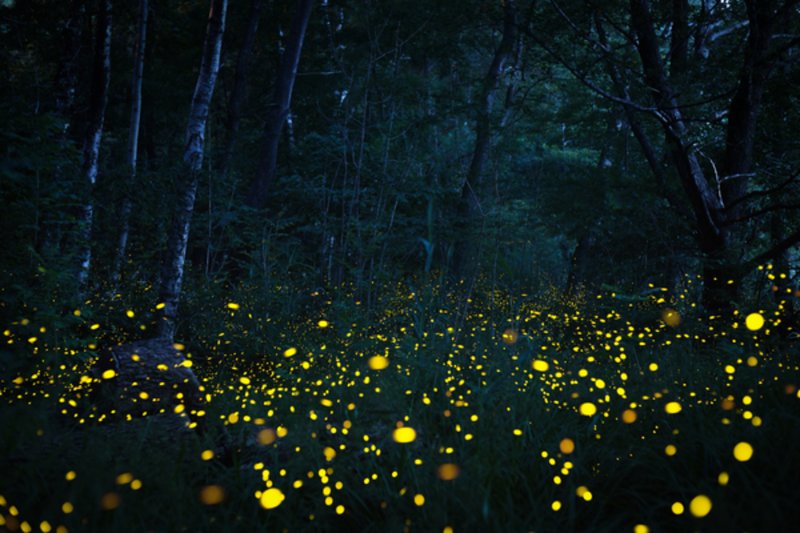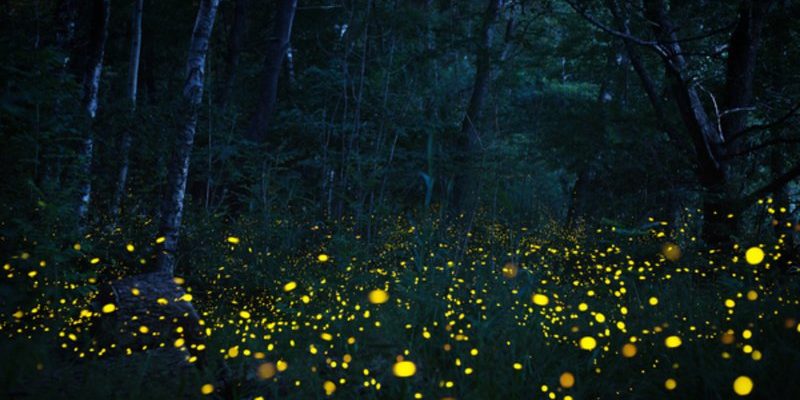
Imagine the firefly as a little messenger from the night sky, carrying stories of love, hope, and transformation. As you sip on your coffee, let’s dive into the world of fireflies and explore how they’ve shaped cultural beliefs around the globe. You’ll find that their flickering lights tell tales of joy, connection, and sometimes even the fleeting nature of life itself.
Fireflies in Folklore and Mythology
Fireflies often appear in folklore, where their glowing bodies are interpreted as mystical signs. In many cultures, these insects represent the souls of loved ones lost, illuminating the darkness with memories. For instance, in Japan, fireflies are celebrated in poetry and art as symbols of the spirit. The brief glow of fireflies serves as a reminder that life is precious but also fleeting, capturing the beauty of both existence and loss.
In Native American traditions, fireflies are sometimes seen as sparks of energy or vitality. They’re thought to carry messages from the spirit world, guiding people through their challenges. Each flicker could be seen as a reminder to pay attention—to the world around us and to our own inner journeys—inviting a deeper appreciation for nature’s mysteries.
Fireflies as Symbols of Love and Bonding
In various cultures, fireflies are linked to love and connection. Their gentle luminescence has been compared to the light of a romantic relationship—bright yet fragile. In Chinese culture, for example, fireflies are often associated with love and romance. It’s not uncommon for lovers to stroll through fields filled with these glowing bugs, using their light as a backdrop for whispered promises and shared dreams.
Similarly, in some Southeast Asian cultures, fireflies are seen as a sign of good luck for couples. Much like the bonds between partners, the flickering light of these insects signifies hope and togetherness. The way they sync their lights during mating displays creates a perfect metaphor for harmony in relationships, where both partners shine together in unison.
The Role of Fireflies in Art and Literature
Artists and writers have long been enchanted by fireflies, using their captivating glow to illustrate deeper themes in their works. From classic poetry to modern design, fireflies convey enchantment and emotion. For instance, in literature, they often symbolize transience, beauty, and the passage of time. You might find fireflies appearing in stories where characters experience life-changing moments—a spark that ignites their journey or a gentle reminder of what’s important.
In visual arts, their soft glow can evoke a sense of nostalgia or wonder. Artists use fireflies to create dream-like scenarios that transport viewers into magical realms. Whether it’s through paintings or sculptures, the representation of fireflies often captivates and evokes feelings of joy and serenity, reminding us of childhood nights spent chasing their elusive lights.
Fireflies in Environmental Symbolism
Beyond cultural and artistic interpretations, fireflies also symbolize environmental health. When you see a firefly, it usually indicates a healthy ecosystem. These insects thrive in clean, unpolluted environments, making their presence a signal of ecological balance. Conversely, a decline in firefly populations can point to issues like habitat loss or pollution.
Many conservation efforts highlight the importance of protecting these glowing creatures, emphasizing how closely they’re tied to the health of our planet. When we appreciate the cultural symbolism of fireflies, we also acknowledge our responsibility to safeguard their habitats. It’s a reminder that we are part of a larger web of life and that each flickering light contributes to the health of our shared home.
Fireflies as a Metaphor for Spiritual Enlightenment
Now, let’s shift gears and explore how fireflies symbolize spiritual awakening across many spiritual paths. Their ability to illuminate the night makes them powerful symbols of enlightenment and insight. Many cultures believe that observing fireflies can guide individuals toward deeper understanding or personal transformation.
For some, the moment a firefly lights up can be seen as a signal to reflect on one’s life journey. It’s almost as if these creatures are encouraging you to embrace your true self and confront your fears. Just as they flit through the darkness with grace, so too can we find our paths in life. This idea resonates deeply in practices like meditation and mindfulness, where the firefly becomes a potent symbol of inner illumination.
The Impact of Fireflies on Modern Culture
In today’s world, fireflies continue to capture our imaginations. They appear in films, advertisements, and social media, often invoking feelings of nostalgia and wonder. You might have noticed how fireflies are used in children’s stories to teach lessons about hope and transformation. Through their flickering presence, fireflies remind us that magic still exists in our lives, even amidst chaos and uncertainty.
Moreover, festivals celebrating fireflies have begun to pop up around the world, drawing communities together to appreciate their beauty. These events not only educate attendees about the importance of fireflies but also foster a sense of connection with nature. People of all ages come together to enjoy the simple pleasure of watching these insects light up the night, creating cherished memories that last a lifetime.
In wrapping up our exploration of fireflies, it’s clear that these tiny creatures hold a wealth of cultural significance. From their roles in folklore to their connections with love and spirituality, fireflies teach us profound lessons about life. They remind us to cherish our relationships, respect our environment, and seek enlightenment in our everyday experiences.
So, the next time you catch sight of fireflies dancing in the dusky air, take a moment to appreciate their symbolism. Let their soft glow inspire you to find beauty in life’s fleeting moments and encourage you to shine brightly in your own way. After all, just like fireflies, we all have the potential to light up the world around us.

